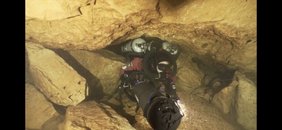Thank you.
It raises a lot of supplementary questions regarding the assumptions, but that's a whole different topic.
The key -- like everything in diving -- is to practice until it's automatic.
I guess the simple question regarding hose length is whether it's "a good thing" to use a longhose (2.1m/7') on a standard bailout stage (as is fairly normal on RH sidemount). This means if you're using it yourself, you drag out half of the hose. The rest is there should you need to do a full longhose deployment and exit in an overhead where the 'victim' cannot take the stage.
Of course this means that if the donor has given away their bailout, they're now completely dependent upon other divers in the event of a drastic failure. With the "GUE" config there's the shorthose and what's left of the diluent.




